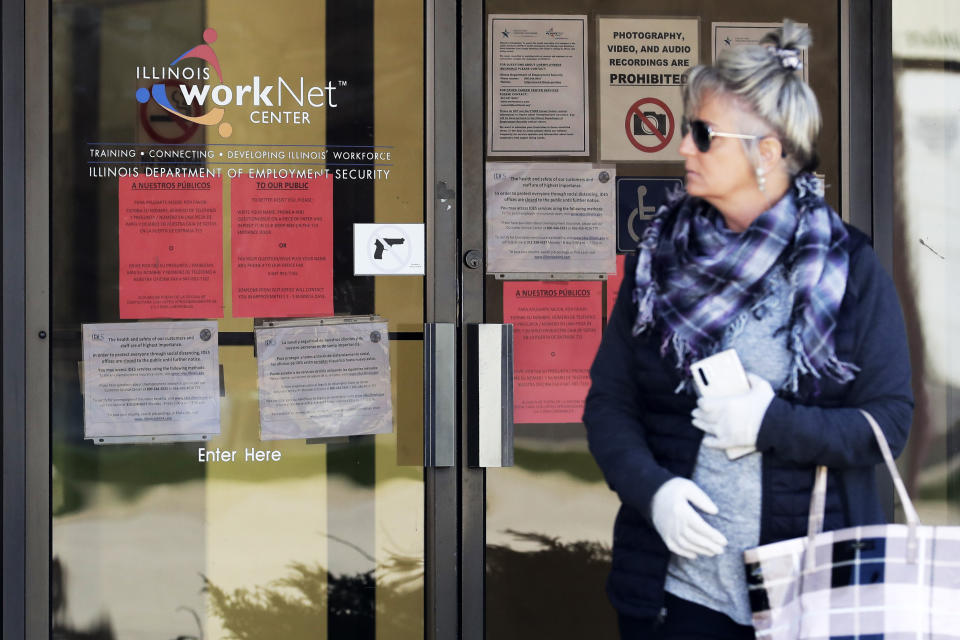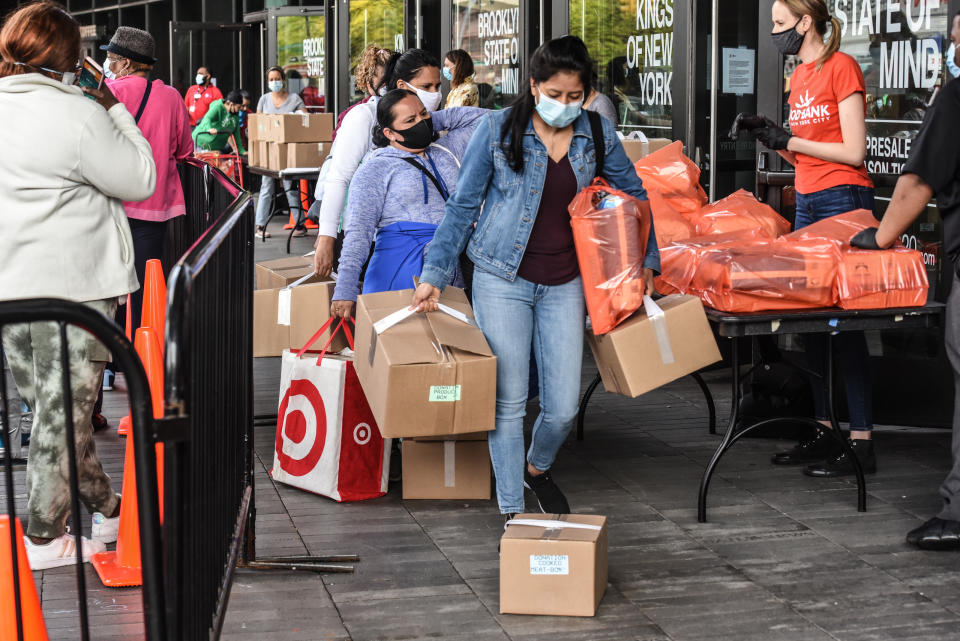Some Americans finally get a living wage — while unemployed
Before the coronavirus pandemic upended the U.S., Kennedy Smith had three jobs: a research assistant for Ohio University, a campus market cashier, and a data entry operator to support her studies.
The Athens, Ohio resident has since lost all three and faced a difficult financial situation — that is, until she started getting her unemployment benefits.
Smith, who put in around 30 to 35 hours of work each week, didn’t make enough to cover her expenses when she was employed. The story, now, is vastly different.
Read more: Coronavirus: How to find a job in a tough economy
“Usually between my three jobs and also being a full-time student, I am able to bring in about $300 and $400 per [bi-weekly] paycheck, but now with unemployment I get about double that,” Smith, 22, said. “I make more off unemployment than I did when I had three jobs.”
Smith is not an anomaly. Two in 3 Americans who got the additional $600 benefits under the CARES Act are now earning more than when employed, according to a recent paper from Becker Friedman Institute at the University of Chicago. The median income replacement rate is 134%, the study finds.

The findings also underscore how little the lowest-earning Americans normally make relative to their living expenses.
For instance, Smith earned just above the minimum wage for her county before she lost her three jobs. Now she’s getting more than a living wage, which is higher and is defined as the minimum income necessary for a worker to meet their basic needs, according to Massachusetts Institute of Technolgy’s living wage calculator.
Read more: What to do before you lose your job
“People who were working in a minimum wage job, prior to this, they weren’t making a sufficient income to cover their cost of living. Period,” said Amy Glasmeier, professor of economic geography and regional planning at MIT and creator of the living wage calculator. “They would have had a minimum of two and a half minimum wage jobs to be able to cover a single person's cost of living.”
‘A whole lot of people earning way too little money’
Overall, personal income increased by more than 10% in April despite the worst unemployment rate since the Great Depression, according to the Bureau of Economic Analysis. While this was largely driven by the stimulus checks that many still-employed Americans got, a smaller factor was the expanded unemployment benefits that lower-earners who are now jobless received.
Read more: How to file for unemployment insurance
“For the people for whom $600 a week, or $2,400 a month, means they're actually earning more, that tells me that there's a whole lot of people earning way too little money,” said Michele Evermore, senior researcher and policy analyst at the National Employment Law Project, a workers' rights group that researches policy for low-wage workers. “That's the core problem. Not that somebody has a living wage for a couple of months.”
For the state of Ohio, the additional unemployment benefits have increased the income of eligible people in the state by up to 177% of their income, according to the Becker Friedman paper. For Smith, who has seen an even higher level of increase in her income, this has helped her personal finances.
“I feel much better about my finances now, honestly. I’m able to pay ahead on bills and actually start saving again,” Smith said. “If I made this much regularly, I would be much better off than I usually am.”

So is Chelsey Klosterman of Seymour, Indiana, who was recently laid off from her factory job. Her income increased by 20% while receiving unemployment benefits, which helped her finances significantly.
“It was awesome for my finances,” Klosterman, 26, told Yahoo Money. “If I had stayed on unemployment for another month, I would’ve had my credit cards paid off and been able to start a savings or start making some improvements I need to make to my house.”
‘Really it's a disincentive to unsafe work’
The expiration of the additional unemployment benefits at the end of July will likely mean that many who saw an increase may soon experience an income slump, if they don’t find a job when the benefits expire, according to Glasmeier.
Read more: Workers rights: Here's how the new coronavirus legislation protects you
“This is temporarily changing the amount of money coming into your household. It isn’t producing any sort of permanent change,” Glasmeier said. “If it goes away, then the people that are in that condition of minimum wage or minimum employment are basically going to be faced with the same problem they're faced with everyday — and that is the inability to cover their costs.”
Critics of the additional $600 of unemployment say the benefit disincentivizes employees to return to work when they’re paid more to stay at home.

“We're starting to hear from a lot of businesses if they're able to reopen, they're having a hard time getting their workers to come back in and work” Rachel Greszler, a fellow at Heritage Foundation, “because they're competing with the government unemployment insurance benefits.”
But Evermore disagreed because those additional benefits really are “a disincentive to unsafe work,” because of the coronavirus.
Smith has given up on finding a job at the moment and uses the time to study for the GRE and to volunteer as she wants to go into healthcare or rehabilitation.
“I'm sure you can find people who would say that I would rather continue to get $600 and not go back to work because it's dangerous. That's because they are making close to a minimum wage,” Glasmeier said. “It completely makes sense for someone to sit out of the labor market as long as they can if they have the possibility of getting sick, and then being disabled, and then unable to work.”
While Smith has put her job search on hold, Klosterman recently returned to her job at the factory. But this brings another set of challenges in addition to receiving less income than she did when she was unemployed.
“They put up dividers to help keep us separate on the line, but we still go to the same break room to eat. Now that it’s June, it’s also hot and the A/C in the plants can’t handle it,” she said. “When I got to work the other morning at 6 a.m., it was already 95 degrees in there. Add wearing a mask and gloves and moving on your feet all day and it takes a toll.”
Denitsa is a writer for Yahoo Finance and Cashay, a new personal finance website. Follow her on Twitter @denitsa_tsekova.
Read more:
Here's why the US still has one of the highest jobless rates among developed countries
‘They just couldn't afford to bring us back’: Many furloughs turn into permanent layoffs
Read more personal finance information, news, and tips on Cashay
Follow Yahoo Finance on Twitter, Facebook, Instagram, Flipboard, SmartNews, LinkedIn, YouTube, and Reddit.

 money
money 

